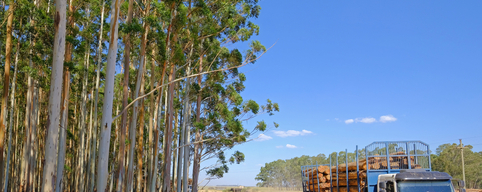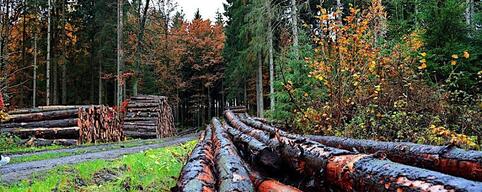

The Latvian timber market has recently undergone changes, as clearly shown by the Central Statistical Office's data on log purchase prices. In the second half of last year, softwood saw a significant increase in prices, while hardwood, on the other hand, declined in value.
Prices for softwood sawlogs have increased, with pine and spruce logs feeling the effects. Pine sawlogs up to 14 cm in diameter have seen a price increase of 10%, or around €8 per cubic metre, to €81.4 excluding VAT. Spruce sawlogs, on the other hand, followed a similar trend, with a price increase of 10%, or seven euros, to 75.8 euros per cubic metre excluding VAT.
When looking at the widest diameter (14-18 cm) pine and spruce logs, there has been a 9% price increase. These figures undoubtedly reflect the growing demand for softwood materials, possibly linked to various construction and furniture projects that require quality raw materials.
Increasing demand, a more active export market and global economic trends are contributing to these price developments. In the face of rising energy costs and labour costs, the timber industry is faced with the need to adjust prices in order to maintain profits and ensure the long-term stability of operations.
Sustainable management of natural resources and responsible forest management practices are also important factors in these changes, ensuring that demand for roundwood is sustainable and balanced.
Although the price of softwood has generally increased, there are still concerns about stability and sustainability, given the potential for future market volatility, which could be influenced by various factors including climate change and international regulations.
In summary, the statistics point to a progressive and evolving trend, which demonstrates the importance of conifers in the Latvian forest sector and its ability to adapt to changing economic conditions.
In contrast, the deciduous segment of the market is experiencing a price decline, and this is particularly pronounced in the category A birch veneer segment. This type of wood is traditionally used in the production of high quality furniture and other products, so this price decrease could reflect a change in demand or a saturated market.
Also, prices for various species such as oak and alder have recently experienced a slight price decline, which could be linked to the optimisation of supply chains and more efficient management practices. These trends suggest the need for innovative approaches to increase demand for hardwood material in existing markets.
The reasons for the decline could be varied, such as changing demand, which could be due to substitution opportunities, or reduced construction activity in certain segments of the industry where hardwood is commonly used.
Despite the fact that segment prices have experienced a downturn, the role of hardwoods in Latvian wood processing remains significant and ways are being sought to maintain its competitiveness by promoting further product development and seeking new export markets.
The main challenge is to ensure that this price reduction does not affect the overall ability of the market to adapt to future challenges, which imply a more rational use of natural resources and sustainable forest management.
This requires close cooperation between producers, exporters and government to ensure balanced development and a long-term vision for the future of Latvia's forest sector.



